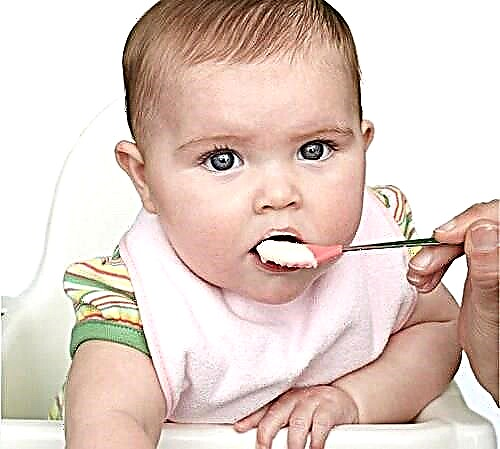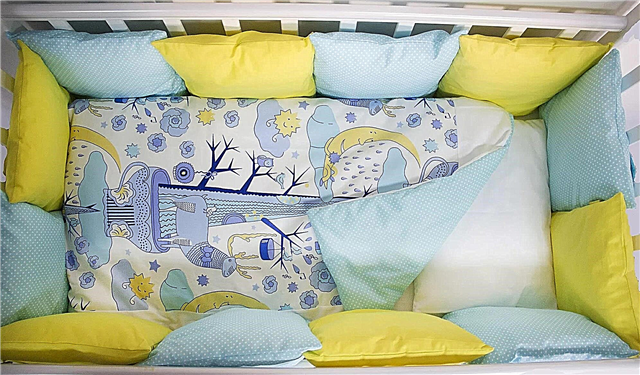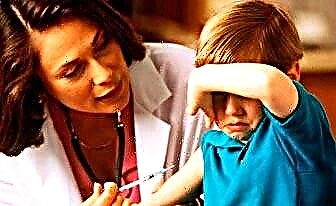Children under the age of one year, due to the peculiarities of their physiology, can have a temperature exceeding the usual 36.6 ° C. However, it can change throughout the day. Medical studies indicate what body temperature a child should have at 3 months. These indicators are equal to the values of the norm for children who are already six months old.

The temperature of the baby is measured
The normal value of hyperthermia for a 3-month-old baby
It is impossible to answer with one value about what temperature a child should have at 3 months. It can be argued that the permissible upper limit is 37.5 ° C. If there are no additional symptoms, there is no need to talk about the child's illness. An increase in body temperature within acceptable values, as a rule, occurs as a result of overheating. Parents often dress their children in too many clothes, wrap them up in pajamas at night and cover them with duvets, trying to exclude hypothermia of the crumbs. For a child, overheating is much more terrible than hypothermia.
The danger of overheating is due to underdeveloped sweat glands. During active play, dressed in several layers of clothing, the child will certainly begin to warm up, the still imperfect system of perspiration does not give him the opportunity to sweat and cool down. As a result, the body overheats, the child does not feel well, and adults have cause for concern. Therefore, it is very important to keep the air in the room within the normal range: the indicators of the thermometer and hygrometer must be at the specified values at t = 18-22˚С, humidity 55-65%, then the child's body temperature will be provided.

Indicators are normal
Attention! The temperature norm in a child differs significantly from the normal value for an elderly person. Therefore, if the older generation experiences discomfort when the air temperature in the room is 20 degrees, then this is not a reason to wrap up the child. Children at this temperature feel comfortable in shorts and a T-shirt.
How to measure the temperature of a small child
There are several types of different thermometers. Each of them reliably measures, but has its own characteristics. So, the generally accepted 36.6 ° C is the norm for the armpit. When measuring the temperature of a child using a nipple-thermometer, it should be borne in mind that the results obtained will be 0.6-1.2 ° C higher than those that would have been obtained when measured in the armpit. The same applies to devices equipped with an auricle attachment - it will also be 0.5-0.8 ° C higher.

Different thermometers
Important! It is not necessary to measure the temperature of a child under 3 months of age in the auricle, since due to the peculiarities of thermal processes in the body, the result may be unreliable. This method is more suitable for one year old children.
Using a traditional mercury thermometer, before placing it in the armpit, it is necessary to shake off the readings to a value below 35˚С. At the same time, the armpit should be dry, therefore, if the child is sweating, the skin must be wiped off. The measurement duration in this way is 10 minutes. During the measurement, the child should be at rest and firmly press the thermometer with his hand to the body. For the convenience of the study, the mother of a sleeping three-month-old baby can take him in her arms, insert the device into the fold between the arm and the body and, firmly pressing the device, hold the baby in her arms for 10 minutes.
Modern infrared thermometers allow you to measure readings from the surface of the forehead without touching the head. Such devices are one of the most expensive, while they are considered the most accurate. The principle of operation of such a thermometer is based on the assessment of the temperature of infrared radiation emanating from the body surface. The temperature of a 3 month old baby can be measured in this way in a second.

IR thermometer
What is the reason for the rise in temperature
There can be several reasons for the temperature rise: from banal overheating to a serious illness. The doctor should understand each of them, but the parent is able to adequately assess the situation, knowing what temperature their three-month-old child should have, having carefully analyzed all the details. It is important to notice other symptoms accompanying an increase in body temperature. A set of complaints will help you get a complete picture of what is happening.
Possible symptoms associated with fever:
- A runny nose, a hoarse voice and cough are typical signs of an acute infectious disease;
- Swollen gums - the child is healthy, but his teeth are teething. In this situation, transparent nasal discharge may appear due to irritation and inflammation of the oral mucosa, the main accompanying symptoms are swelling and redness of the gums;
- Vomiting and frequent loose stools are symptoms of an intestinal infection;
- Whistling and wheezing on inhalation - bronchitis;
- The simultaneous appearance of a red blistering rash all over the body - chickenpox;
- An increase in temperature after a walk in the scorching sun, accompanied by general weakness and loss of consciousness - heatstroke;
- Concomitant severe ear pain indicates acute otitis media.
It so happens that, in addition to temperature, there are no additional symptoms. This is most often the cause of overheating. Parents should pay attention to the amount of clothing on the child and the ambient temperature.
There is a disease - a viral infection, the symptom of which in the first 3-5 days will be only a fever and nothing else. The child remains active, eats well and sleeps peacefully, does not experience a breakdown, does not be capricious. The temperature both appeared suddenly and returned to normal by itself, after a few days, on the day the temperature returned to normal, a red rash appears on the child's body. It does not cause discomfort to the child and goes away on its own after a few days. This disease is called sudden exanthema or roseola.

Roseola
Hyperthermia is one of the most common consequences of vaccination. The temperature rises especially significantly after DPT. It can last for three days and reach 38-39 degrees. You can help the child in this case with the help of children's forms of antipyretic drugs. To help the baby cope with the formation of immunity, do not overload him with food: feed only at the request of the child, and also give a large amount of drink.
What should be considered a cause for concern
Seeing a doctor will not be a mistake with any increase in temperature, but there are cases in which expert advice is necessary under certain conditions for sure:
- If the body temperature does not decrease on the third day, even by a small number of divisions.
- When on the fifth day the temperature did not return to normal or, conversely, increased.
- If the parents are unable to water the child.
- When antipyretic drugs do not bring relief.
The most important task for parents is to free the child's body from food, especially heavy and fatty ones. The liver, overloaded with nutritional tasks, is unable to effectively fight the pathogen. Drinking plenty and often drinking can save a child from the most dangerous result of fever - dehydration. It is because of the danger of dehydration with intestinal infections that children are placed in infectious diseases wards, where, with the help of droppers, they help the body to replenish the loss of fluid due to overheating and vomiting.
Signs of dehydration:
- there is no urge to urinate for a long time (dry diaper for more than three hours in a row);
- while crying, the child does not cry;
- dry mouth;
- lack of effect, an hour after taking antipyretic drugs.
For any antipyretic agent to work, it needs to be absorbed into the bloodstream. This will not happen if there is not enough fluid in the body. Drinking a lot of compote, water, juice, fruit drink or herbal tea is the key to a successful and speedy recovery.

Dropper
When to use antipyretic
An antipyretic agent is used regardless of the thermometer, when the child does not tolerate even the slightest increase in body temperature, which provokes a fever and convulsions. Also, an indication for the use of drugs is obvious hyperthermia - 39 degrees and above.
Attention! In no case should you rub the skin of a sick child with alcohol or vodka for antipyretic purposes. Sleep is absorbed into the bloodstream through the skin, and the child can become alcoholic.
In other cases, an increase in the value from 37 to 38 degrees is left without drug treatment, allowing the body to independently produce interferon to combat the pathogen. This does not mean that you do not need to do anything at all, it is important to bring the environmental indicators back to normal:
- the air in the room where a healthy child lives should not warm up more than +22 degrees Celsius, in a room with a sick child the temperature should be closer to +18;
- be sure to humidify the air in the room with the baby - the comfortable readings of the hygrometer should be between 55% and 65%;
- several times a day the room should be ventilated;
- the sick child is not force-fed and given a lot to drink.
Compliance with such simple rules helps to keep the temperature of a 3-month-old child in the norm more effectively than any antipyretic agent. The mentality of the parents does not allow us to accept the fact that tidying up a room is not inaction, but real and the best help for a sick child with any illness.



